Dark Opal Basil (Ocimum Basilicum) Profile
Written by Iris
Oct 22 2021
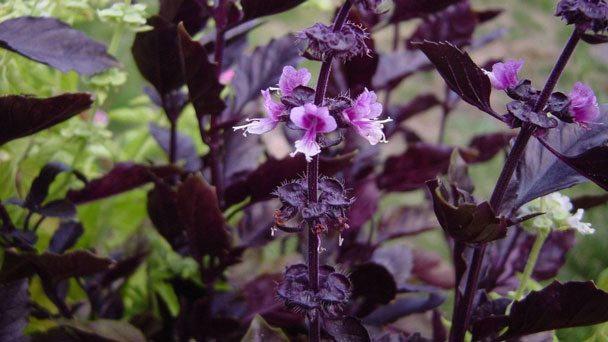
Dark opal basil plants are uniform in appearance, with leaves of medium size, averaging 3 to 7 cm in length, oval tapering to a distinct point off the stem. The leaves are smooth, with well-defined veined and serrated edges forming a wrinkled texture and variegated hues of deep purple, Burgundy and green. It is important to note that the colour of the basil may deepen as it matures.
Dark Opal Basil PictureDark Opal Basil InfoDark Opal Basil Native HabitsDark Opal Basil DistributionHow to Grow & Care for Dark Opal BasilHow to Grow Dark Opal BasilHow to Care for Dark Opal BasilDark Opal Basil UsesDark Opal Basil Common Pests/DiseasesDark Opal Basil Harvest & StorageDark Opal Basil Companion Plants
Dark Opal Basil Picture
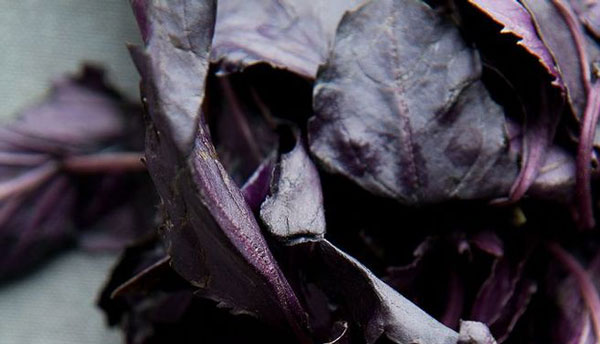
Dark Opal Basil Info
| Botanical Name | Ocimum basilicum 'Dark Opal' |
| Common Name | Dark Opal Basil Plant |
| Plant Type | Annual herb |
| Mature Size | Up to 20 inches |
| Sun Exposure | Full sun |
| Soil Type | Loamy, sandy, well-drained |
| Soil pH | Tolerates a wide range |
| Bloom Time | Late summer |
Dark Opal Basil Native Habits
Members of the genus Ocimum have bisexual and zygomorphic flowers with diurnal anthesis. There is very limited information about the reproductive biology of O. gratissimum, but species in the same genus, such as O. basilicum and O. americanum, exhibit a mixed mating system via out-crossing and autogamy. Pollination by insects, including bees, butterflies, flies and wasps has been reported for various Ocimum species, and a study also showed that for three different species within this genus, insect pollination enhances fruit and seed production.Ocimum gratissimum is a perennial herb. In South East Asia, flowers can be found throughout the year . In India O. gratissimum produces flowers and fruits from August to December. In China it has been recorded flowering in October and fruiting in November. In cultivation, plants may remain productive for 5-10 years.
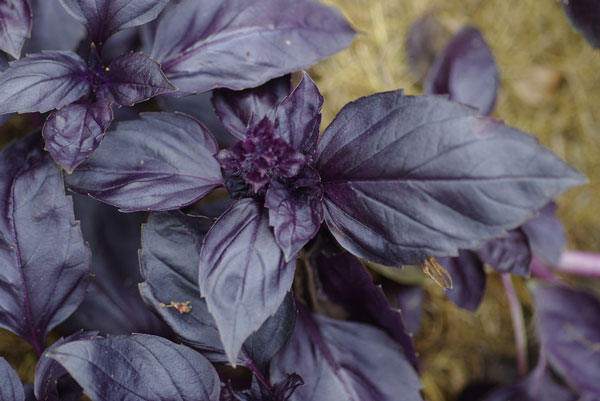
Dark Opal Basil Distribution
Dark Opal basil Plant was developed at the University of Connecticut in the 1950s. Wild basil seeds were collected from Turkey through the United States Department of Agriculture and were sent to the University of Connecticut for research and breeding. Scientists John Scarchuk and Joseph Lent planted the seeds and selected a dark-purple basil plant from the seedlings for further cultivation. Scarchuk and Lent performed several years of breeding to develop a purple basil variety with a uniform appearance and flavor, eventually creating Dark Opal basil. The new variety was released in 1962 through the Ferry-Morse Seed Company, and over time, the purple cultivar became a common home garden plant. dark opal basil is sold fresh through specialty grocers and farmer's markets, and it is also offered in seed form through retailers and online seed companies.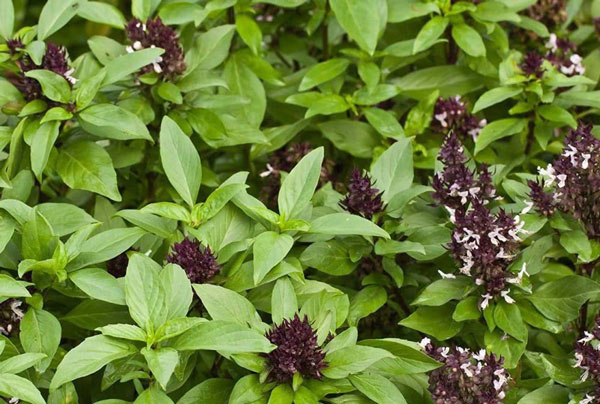
How to Grow & Care for Dark Opal Basil
How to Grow Dark Opal Basil
- With Seeds
- With Scion
This is how to turn a scion into a new Dark Opal Basil herb:
- cut off five to ten shoots with a length of about ten centimeters and remove the leaves from the lower halves
- place the shoots in a translucent vessel filled with water
- position the cuttings in a light place but not exposed to the bright midday sun
- renew the water every two to three days
- as roots have developed after about a week, the cuttings can be planted in substrate together
- keep the substrate constantly moist, but not too wet
- optimal temperature: between 20 degrees Celsius and 24 degrees Celsius
- best time for propagation: April
How to Care for Dark Opal Basil
- Light
- Soil
- Water
- Temperature and Humidity
- Fertilizer
- Pruning
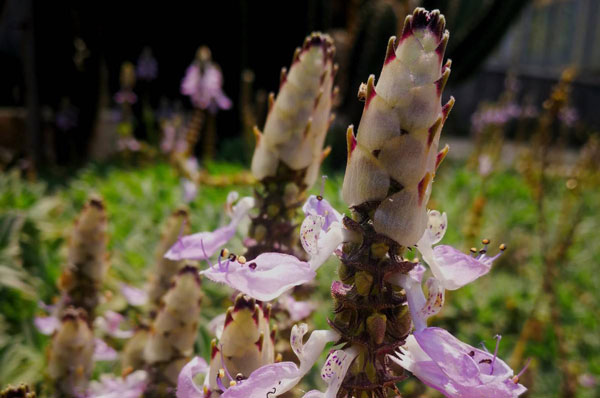
Dark Opal Basil Uses
Dark Opal basil leaves have a fragrant aroma and mild taste best suited for flavoring both fresh and cooked preparations. The purple leaves can be lightly torn or crushed and tossed into green salads, used whole as an edible garnish on fruit and cheese platters, or roughly chopped and mixed into pasta and stir-fries. Dark Opal basil leaves can also be layered into sandwiches, stirred into curries, soups, and stews, dried as a seasoning, blended into sauces such as pesto, or served with seafood to create depth of flavor. Beyond fresh applications, Dark Opal basil leaves can be steeped into a tea, or they will impart a faint red-purple hue when soaked, popularly infused to add pigment, aroma, and a light anise-like taste in culinary oils and vinegar. Dark Opal basil can also replace green basil varieties in caprese salads, and most other recipes calling for standard sweet basil. In addition to the leaves, the lilac-pink flowers are used as a decorative, edible garnish for soups, drinks, main dishes, and desserts. Dark Opal basil pairs well with tomatoes, potatoes, corn, zucchini, ginger, fruits such as strawberries, watermelon, and blackberries, nuts such as pine nuts, almonds, and walnuts, cheeses such as parmesan, goat, mozzarella, and feta, rice, pasta, and legumes. Sprigs of Dark Opal basil can be stored in a glass of water and covered with a plastic bag, where it will keep 3 to 7 days when stored in the refrigerator. The leaves can also be stored in their original container if purchased in a clamshell for a couple of days or wrapped in paper towels and stored in a plastic bag in the refrigerator.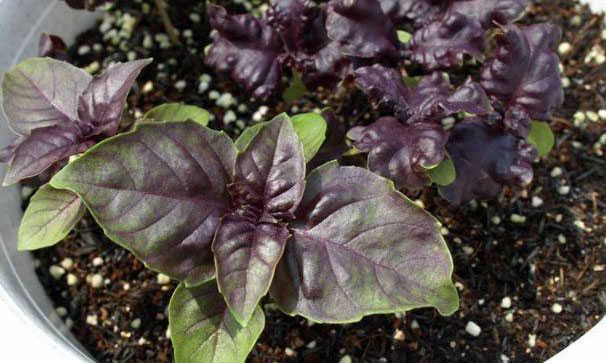
Dark Opal Basil Common Pests/Diseases
Slugs can be a problem of Dark Opal Basil, especially during the late spring and early summer. It is advisable to use natural slug control remedies such as beer traps and crushed egg shells as opposed to slug pellets. Aphids can also be a problem so best be vigilant and remove them with a jet of water or introduce a biological control method, such as ladybird larvae.Dark Opal Basil Harvest & Storage
Basil will keep growing throughout the summer if kept watered and if the leaves are harvested regularly. Remove any Dark Opal Basil flower buds as they appear to encourage more leaf growth. Fresh leaves can be frozen for later use. It is very difficult to grow basil during the winter so you might want to dry some leaves at the end of summer and store for later use. Do this by cutting the whole plants at the base of the stem and hanging them upside down in a dry warm place. When the leaves have fully dried, simply crumble them and store in a dry, airtight jar.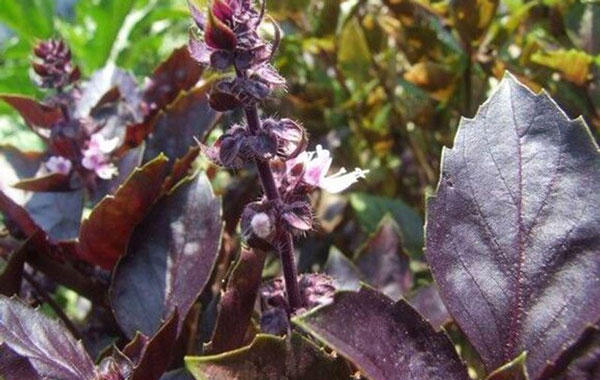
Dark Opal Basil Companion Plants
Basil does well with asparagus and helps tomatoes overcome pest insects and disease while improving growth and flavor of both. It is best to grow the shorter basil plants alongside or parallel to the tomato plants instead of among them in their shade.Peppers-both sweet and hot -like basil alongside them, as does beans, beets, cabbage, and eggplant. Herbs that like basil nearby are oregano and chamomile.
Basil repels mosquitoes and most flies, so keep a couple of planted pots near doorways and entrances.
Common rue and sage are antagonistic to basil, so don't plant them near each other.
Latest Updated
- Benefits of Bugleweed - 7 Science-backed Health Benefits
- Bugleweed Dangers & Side Effects - Is It Poisonous?
- How to Plant Evergreen Trees - What You Should Know
- When to Plant Evergreens - Grow Guide for Evergreen Trees
- 12 Wonderful Evergreen Shrubs for Your Garden
- 12 Popular Evergreen Plants with Pictures for Beginners
- When And How To Prune A Lilac Bush Like a Pro
- How to Grow & Care for Lilac Vine (Hardenbergia Violacea)
- Japanese Lilac Tree (Syringa Reticulata) Care & Propagation Guide
- Shumard Oak Pros and Cons - What to Know
Popular Articles
- Winter maintenance of Antirrhinum Majus
- How to Grow Terminalia Mantaly Tree
- How to Grow and Care for Crossostephium Chinense
- How to grow Antirrhinum Majus in spring
- Peristeria Elata (Dove Orchid) Profile: Info & Care Guide
- Underwatered Snake Plant (Sansevieria Trifasciata) - Signs And How To Fix
- How to Care for Brazilian Jasmine Plant (Mandevilla Sanderi)
- How to Grow & Care for Graptopetalum Purple Delight in Summer
- Rosa Chinensis (China Rose): Plant Growing & Care Tips
- How to Care for Baby Sun Rose (Aptenia Cordifolia)